Entry Database : PDB / ID : 2l3wTitle Solution NMR Structure of the PBS linker domain of phycobilisome rod linker polypeptide from Synechococcus elongatus, Northeast Structural Genomics Consortium Target SnR168A Phycobilisome rod linker polypeptide Keywords / / / / Function / homology Function Domain/homology Component
/ / / / / / / / / / / / / / / / / / / / / Biological species Synechococcus elongatus (bacteria)Method / Model details lowest energy, model 1 Authors Eletsky, A. / Lee, H. / Lee, D. / Ciccosanti, C. / Hamilton, K. / Acton, T.B. / Xiao, R. / Everett, J.K. / Prestegard, J.H. / Montelione, G.T. ...Eletsky, A. / Lee, H. / Lee, D. / Ciccosanti, C. / Hamilton, K. / Acton, T.B. / Xiao, R. / Everett, J.K. / Prestegard, J.H. / Montelione, G.T. / Szyperski, T. / Northeast Structural Genomics Consortium (NESG) Journal : To be Published Title : Solution NMR Structure of the PBS linker domain of phycobilisome rod linker polypeptide from Synechococcus elongatus, Northeast Structural Genomics Consortium Target SnR168AAuthors : Eletsky, A. / Lee, H. / Lee, D. / Ciccosanti, C. / Hamilton, K. / Acton, T.B. / Xiao, R. / Everett, J.K. / Prestegard, J.H. / Montelione, G.T. / Szyperski, T. History Deposition Sep 24, 2010 Deposition site / Processing site Revision 1.0 Dec 15, 2010 Provider / Type Revision 1.1 Jul 13, 2011 Group Revision 1.2 Feb 22, 2012 Group Revision 1.3 May 1, 2024 Group / Database referencesCategory chem_comp_atom / chem_comp_bond ... chem_comp_atom / chem_comp_bond / database_2 / pdbx_nmr_software / pdbx_nmr_spectrometer / struct_ref_seq_dif Item _database_2.pdbx_DOI / _database_2.pdbx_database_accession ... _database_2.pdbx_DOI / _database_2.pdbx_database_accession / _pdbx_nmr_software.name / _pdbx_nmr_spectrometer.model / _struct_ref_seq_dif.details
Show all Show less
 Yorodumi
Yorodumi Open data
Open data Basic information
Basic information Components
Components Keywords
Keywords PHOTOSYNTHESIS /
PHOTOSYNTHESIS /  Structural Genomics / NORTHEAST STRUCTURAL GENOMICS CONSORTIUM (NESG) / PSI-Biology /
Structural Genomics / NORTHEAST STRUCTURAL GENOMICS CONSORTIUM (NESG) / PSI-Biology /  Protein Structure Initiative
Protein Structure Initiative Function and homology information
Function and homology information
 Synechococcus elongatus (bacteria)
Synechococcus elongatus (bacteria) SOLUTION NMR /
SOLUTION NMR /  simulated annealing
simulated annealing  Authors
Authors Citation
Citation Journal: To be Published
Journal: To be Published Structure visualization
Structure visualization Molmil
Molmil Jmol/JSmol
Jmol/JSmol Downloads & links
Downloads & links Download
Download 2l3w.cif.gz
2l3w.cif.gz PDBx/mmCIF format
PDBx/mmCIF format pdb2l3w.ent.gz
pdb2l3w.ent.gz PDB format
PDB format 2l3w.json.gz
2l3w.json.gz PDBx/mmJSON format
PDBx/mmJSON format Other downloads
Other downloads https://data.pdbj.org/pub/pdb/validation_reports/l3/2l3w
https://data.pdbj.org/pub/pdb/validation_reports/l3/2l3w ftp://data.pdbj.org/pub/pdb/validation_reports/l3/2l3w
ftp://data.pdbj.org/pub/pdb/validation_reports/l3/2l3w Links
Links Assembly
Assembly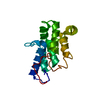
 Components
Components
 Synechococcus elongatus (bacteria) / Strain: PCC 7942 / Gene: Synpcc7942_1049 / Production host:
Synechococcus elongatus (bacteria) / Strain: PCC 7942 / Gene: Synpcc7942_1049 / Production host: 
 Escherichia coli (E. coli) / Strain (production host): BL21(DE3)+ Magic / References: UniProt: Q31PE0
Escherichia coli (E. coli) / Strain (production host): BL21(DE3)+ Magic / References: UniProt: Q31PE0 SOLUTION NMR
SOLUTION NMR Sample preparation
Sample preparation Processing
Processing Movie
Movie Controller
Controller


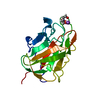
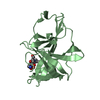
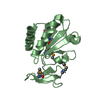
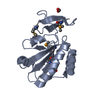
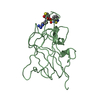
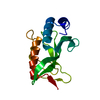
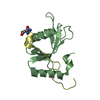
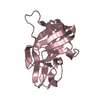

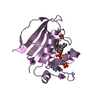
 PDBj
PDBj